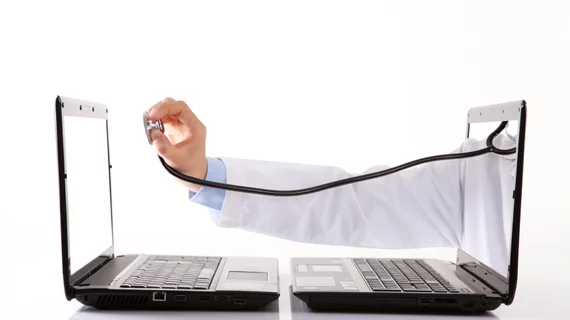Radiology uses telemedicine more than any other specialty, AMA survey finds
Radiology has the highest use of telemedicine for patient interactions than any other medical specialty, according to results from a nationally representative survey published in the December issue of Health Affairs by the American Medical Association (AMA).
Data from 3,500 physicians were included in the AMA’s 2016 Physician Practice Benchmark Survey, aiming to “provide needed data that will help assess potential barriers and create strategies to promote telemedicine adoption,” Carol K. Kane, PhD, study co-author and AMA director of Economic and Health Policy Research, said in a prepared statement.
Radiologists (39.5 percent), psychiatrists (27.8 percent) and cardiologists (24.1 percent) had the highest use of telemedicine for patient interactions. For interactions with health care professionals, emergency medicine physicians (38.8 percent), pathologists (30.4 percent) and radiologists (25.5 percent) used telemedicine most frequently.
Moreover, using telemedicine to store and forward patient data was most common among radiologists (42.7 percent), pathologists (22.7 percent), and cardiologists (14.9 percent), according to researchers.
Additional results included the following:
- Fifteen percent of physicians surveyed worked in practices that used telemedicine for patient interactions and 11 percent of physicians worked in practices that used telemedicine for interactions with health care professionals.
- Videoconferencing—the telemedicine modality most widely used— was most common among emergency medicine physicians (31.6 percent), psychiatrists (25.8) and pathologists (24.1 percent).
- Smaller medical practices and physician-owned medical practices had a lower rate of telemedicine usage than larger medical practices and ones not physician-owned.
- Remote patient monitoring was used in the practices of 7.3 percent of physicians and most common among cardiologists (17.9 percent), nephrologists (15.4 percent) and neurologists (12.8 percent).

